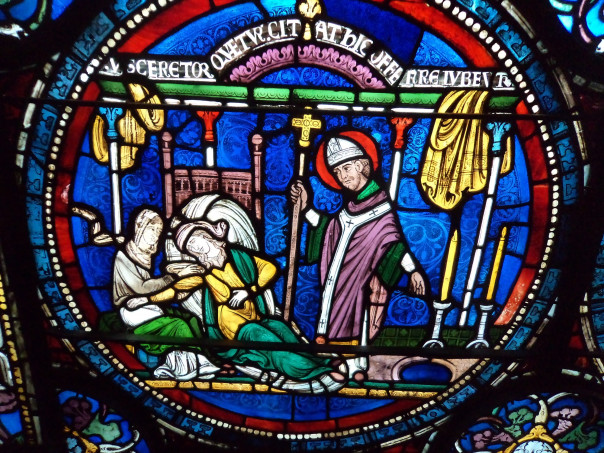For this week, because it marks two big 10th year anniversaries, it seems fairer to give each a separate blog. Therefore, here I’m featuring the contribution by members of the Kent History Postgraduates to the tenth MEMS Fest at the University of Kent.
However, before I come to this report, I thought I would just let you know what will be in next week’s blog because the Association for Manuscripts and Archives in Research Collections (AMARC) Summer Meeting and AGM will be at Canterbury on Monday 24th. The Summer Meeting will feature ‘Canterbury Cathedral: Manuscript and Print in Archive Collections’ and is an excellent opportunity to bring together Canterbury Cathedral Archives & Library and the two Canterbury-based universities in the form of MEMS at Kent and CKHH at CCCU. If you are interested, please contact Dr Alison Ray at alison.ray@spc.ox.ac.uk .
Then on the Wednesday of that week, Kieron Hoyle will give the Kent History Postgraduates presentation on her research including exploring with her colleagues some ideas about relational databases as research tools.
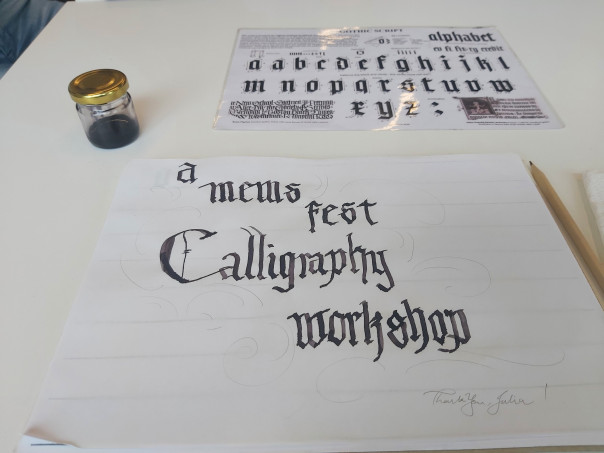
Now to the University of Kent’s MEMS Fest which began on Friday 14 June at 9am with three parallel sessions entitled ‘Literacy and Identity’, ‘Connotation and Image Craft’ and ‘Subversion in Romances’. The very busy morning continued with a choice of three workshop sessions featuring ‘Vikings in Kent’, ‘Digital routes to engaging with early modern drama’ and ‘Lost manuscripts’, which were followed by a similar choice of three panels, again involving international postgraduate and post-doctoral speakers.
After the lunch break, the final set of panels for the day offered further great choices: ‘Conversion in conversation’, ‘Material markers of masculinity’ and ‘Political intersectionality of text and thought’. Thereafter, attendees could explore either ‘Early modern drama on stage’ or ‘Medieval weaponry’ before the keynote lecture given by Dr Alison Ray. Then it was time to head down the hill to Canterbury Cathedral and specifically the water tower and herb gardens for a drinks reception after which many went out to dinner in the city. At least one the Kent History Postgraduates had attended part of the day on Friday and on Saturday there was a much bigger contingent from CKHH. Saturday started with a choice of two workshops on ‘Calligraphy and quill making’ and ‘Exploring audience responses in early modern theatre’ before the choice of three panels. It was great to see CKHH staff and postgraduates in the audience for the panel entitled ‘Place and Performance: networks in late Tudor and early Jacobean Kent’.
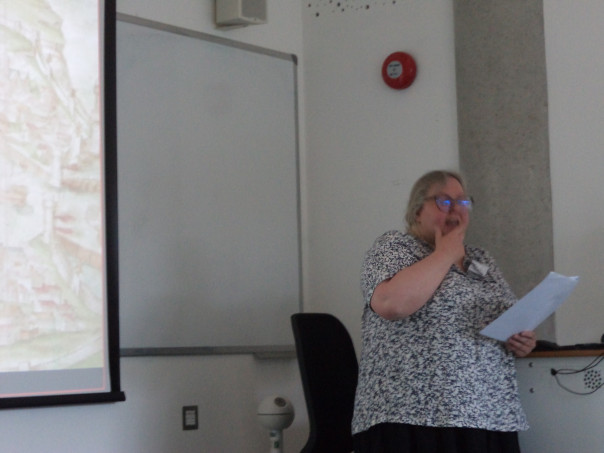
As the chair, I opened the session by introducing Kieron Hoyle as the first speaker. Kieron’s presentation on ‘The Tudor improvements of the port of Dover’ focused on the extensive, if at times ineffectual, works during the reigns of Henry VIII and Elizabeth. Within the context of the idea of networks, Kieron contrasted the importance of local men, including the role of the last master at the Maison Dieu, the involvement of the civic authorities and Dover mariners during Henry’s reign compared to the far great role of the Privy Council under Elizabeth. For albeit under Henry VIII, those at Dover had had to look to the Crown for funding to try to fix the problem of providing a safe deep-water harbour, the initial impetus and most of the activity was down to Dover.
As Kieron explained, by Elizabeth’s reign much had changed and the impetus had switched to central government, even though there would be considerable involvement at times by members of Kent’s gentry – locally/regionally important landholders and frequently JPs. Kieron discussed the sequence of self-proclaimed experts, their plans and costings for the new harbour works, and the commanding role of the Privy Council as they sought to find a suitable but affordable solution. For even though the Privy Council did set up a Dover Commission to represent the various interested bodies in the town who were supposed to be consulted, in reality consultation was minimal and the networks for this later phase can be characterised as regional with a strong pull from London and Westminster.
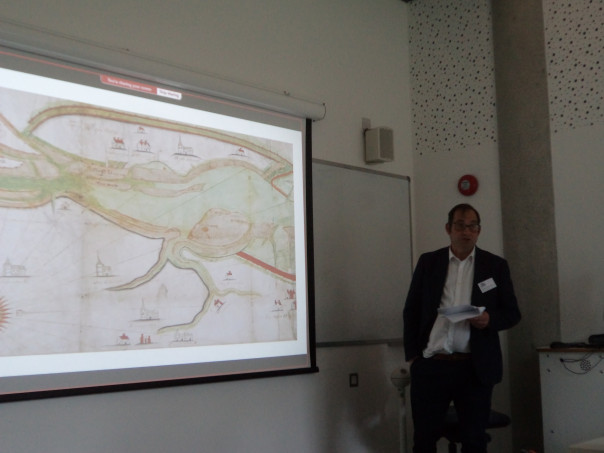
Bearing theses ideas in mind, we next moved to Faversham, and I introduced Jason Mazzocchi whose presentation was entitled ‘The company of the free fishermen and dredgermen of Faversham, 1580–1600’. Jason is interested in discourse analysis and transgressive behaviour in the early modern period and how this might be seen by producers and witnesses through what might be termed performance. Furthermore, such social interactions were also in play through the networks individuals and groups formed and reformed over time it what was a fluid and changing society.
For the purposes of the panel, Jason concentrated on the probate evidence for three of Faversham’s leading citizens: Robert Colwell, Henry Saker and Christopher Finch to illustrate their considerable trading activities, their involvement in Faversham’s political life, their extensive geographical ties through landholding, and their networks which were based on all these elements, thereby linking Faversham to London, other places in east Kent and overseas. Of course, such ties were not always harmonious because local and regional interests were at stake, as seen in terms of the oyster fisheries dispute between Faversham and Milton, thereby drawing in members of the Kent gentry as well as central government. For, as Jason pointed out, the town through its people was enmeshed in a whole series of shifting relationships that might be characterised by ‘negotiating the political’ at individual and communal levels.
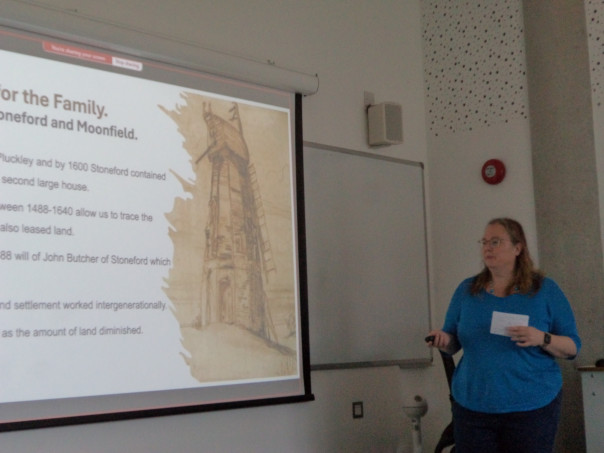
The panel’s third speaker, Kaye Sowden, who is in the final stages of writing up her doctoral thesis, provided a fascinating contrast through her assessment of yeoman families in Pluckley, a parish of scattered hamlets on the eastern fringes of the Weald. As she noted in her presentation entitled ‘The extended yeomanry branches within the community of Pluckley, 1500–1650’, much of the land was in gavelkind tenure which meant among other factors that partible inheritance among all the male children was the norm, and that such landholders were allowed to sell as they wished.
Kaye, too, has been investigating the probate evidence which has provided her with evidence for extensive genealogical tables such as those for the Butchers of Stoneford and Moonfield, and the Posse family, who were able to move into the circles of the gentry through marriage and judicious land acquisitions. Using these as her case studies for her presentation, Kaye illustrated how men such as Nicholas Butcher, a miller with three mills as well as land, sought to provide for all of his children through a range of bequests rather than giving the same to all. In part this pragmatic approach reflected that some of his children were not yet adults, but also was a means to ensure the family’s property assets were primarily kept together, thereby providing the eldest son to earn sufficient to be able to provide monetary bequests when they reached adulthood or married in the case of Grace.
Kaye finished with the case of Theophilus Tilman, a member of a large family who was able to recoup the family’s place in Pluckley by combining working as a day labourer for Sir Edward Dering and gradually buying up land locally as he successfully farmed his own holding. Taking these different examples together, Kaye highlighted the importance of kinship networks, including how these families sought continuity within the area, at times holding neighbouring farms. Yet not all remained in farming, and those engaged in other trades often did move to surrounding parishes while some farmers also expanded their networks through trade, and occasionally when extending their landholdings.
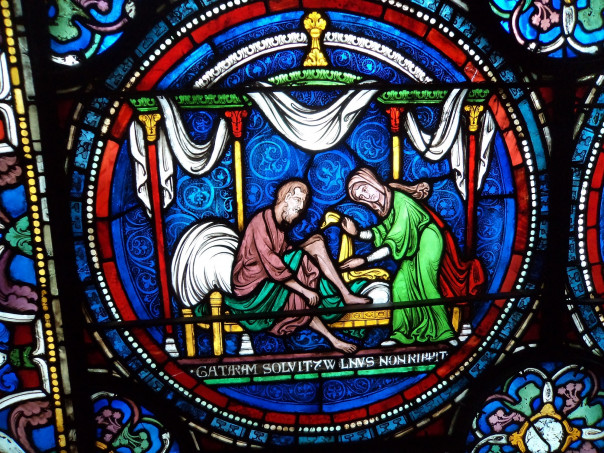
These three excellent presentations drew several questions and comments from the audience, and it was great to see how the common themes had interested those listening, thereby demonstrating the value of such microhistory studies in historical research. Indeed, the usefulness of such a microhistory approach using a Kent example was similarly on display in Luke Farrell’s (University of Kent) presentation on ‘The maps of early modern Canterbury’ in the next set of panels. Furthermore, all three CKHH panellists used the opportunity to extend their own networks, another sign of a good conference!
From my viewpoint, too, it was great to take the opportunity of hearing Dr Emily Guerry in one of the last workshops on Saturday where she was exploring how new digital technologies can provide new forms of impact. Her initial focus was the fantastic stained glass windows of the Sainte Chapelle, created for King Louis IX of France to house his newly acquired relic of the Crown of Thorns in 1239 and a fragment of the true cross two years later. The windows in this stunning building that is a giant reliquary were the subject of Emily’s doctoral thesis and she has continued to be involved in the dissemination of knowledge about them to different audiences ever since.
Taking this as her way in, Emily considers that the use of digital technology coupled with her research and those of others through the medium of the smart phone, which has proved so successful in Paris, potentially could be applied elsewhere, including for the Becket Miracle Windows in Canterbury Cathedral. This is very much early stages but the work by Leonie Seliger (head of the Glass Studio at Canterbury Cathedral) and Dr Rachel Koopmans already on two of the windows has yielded brilliant results and is now being extended to a third window – the ‘Kent window’ and we at CKHH were delighted to be of assistance when they were seeking sponsors.
At the close of the conference, Dr Suzanna Ivanic (head of MEMS) congratulated everyone of a great conference, and especially the postgraduate committee that had worked so hard to make it a success.
 Centre for Kent History and Heritage
Centre for Kent History and Heritage Sheila Sweetinburgh
Sheila Sweetinburgh 1309
1309